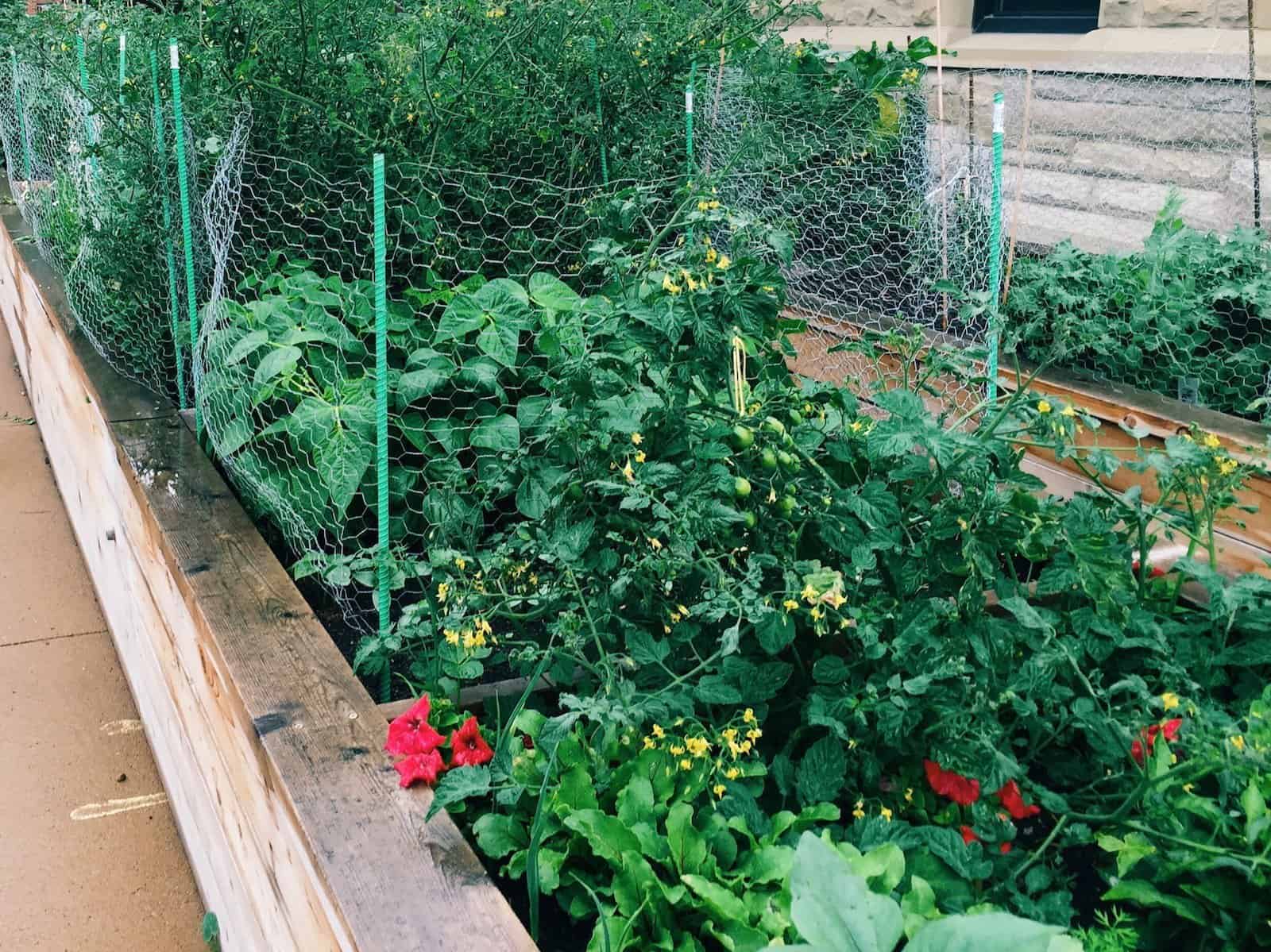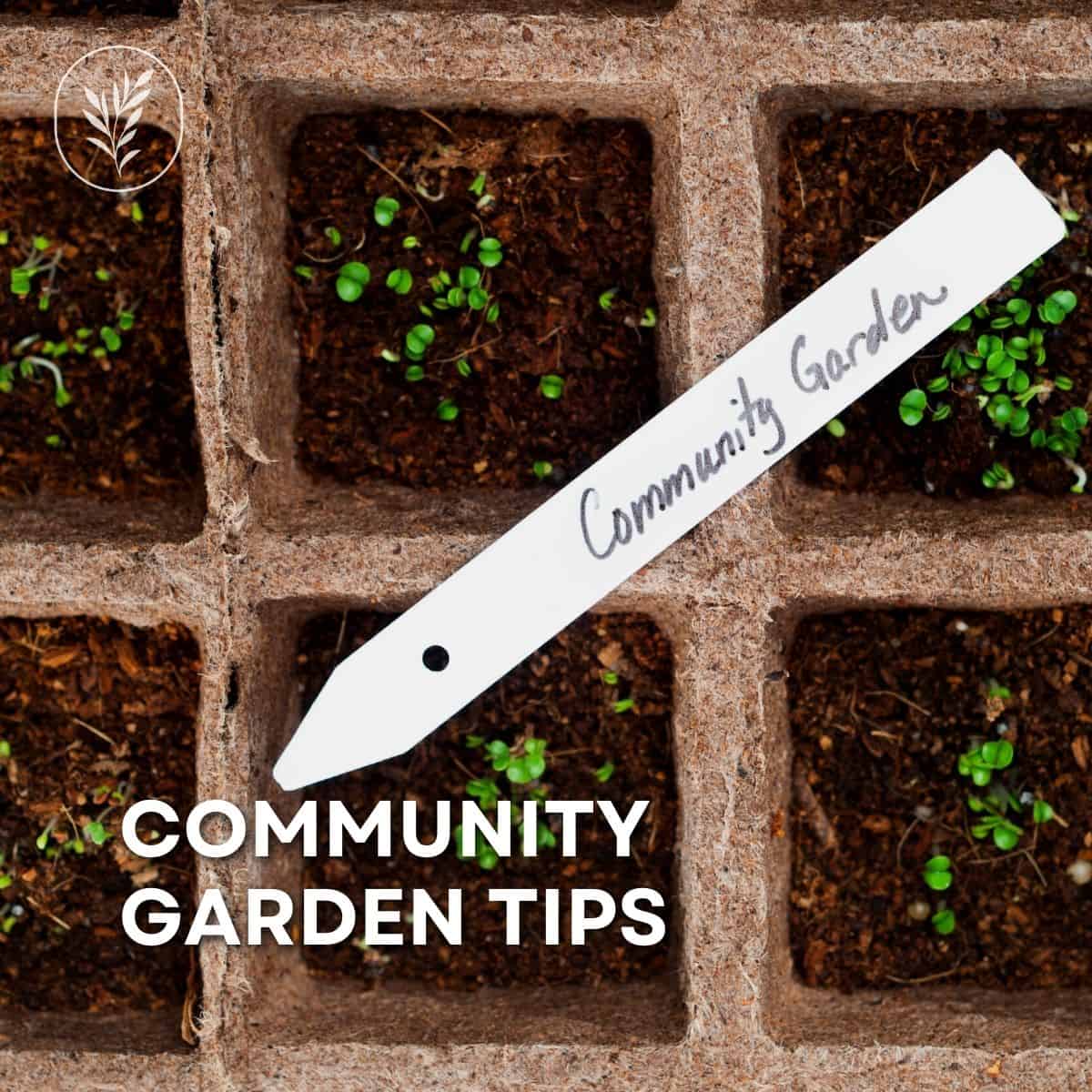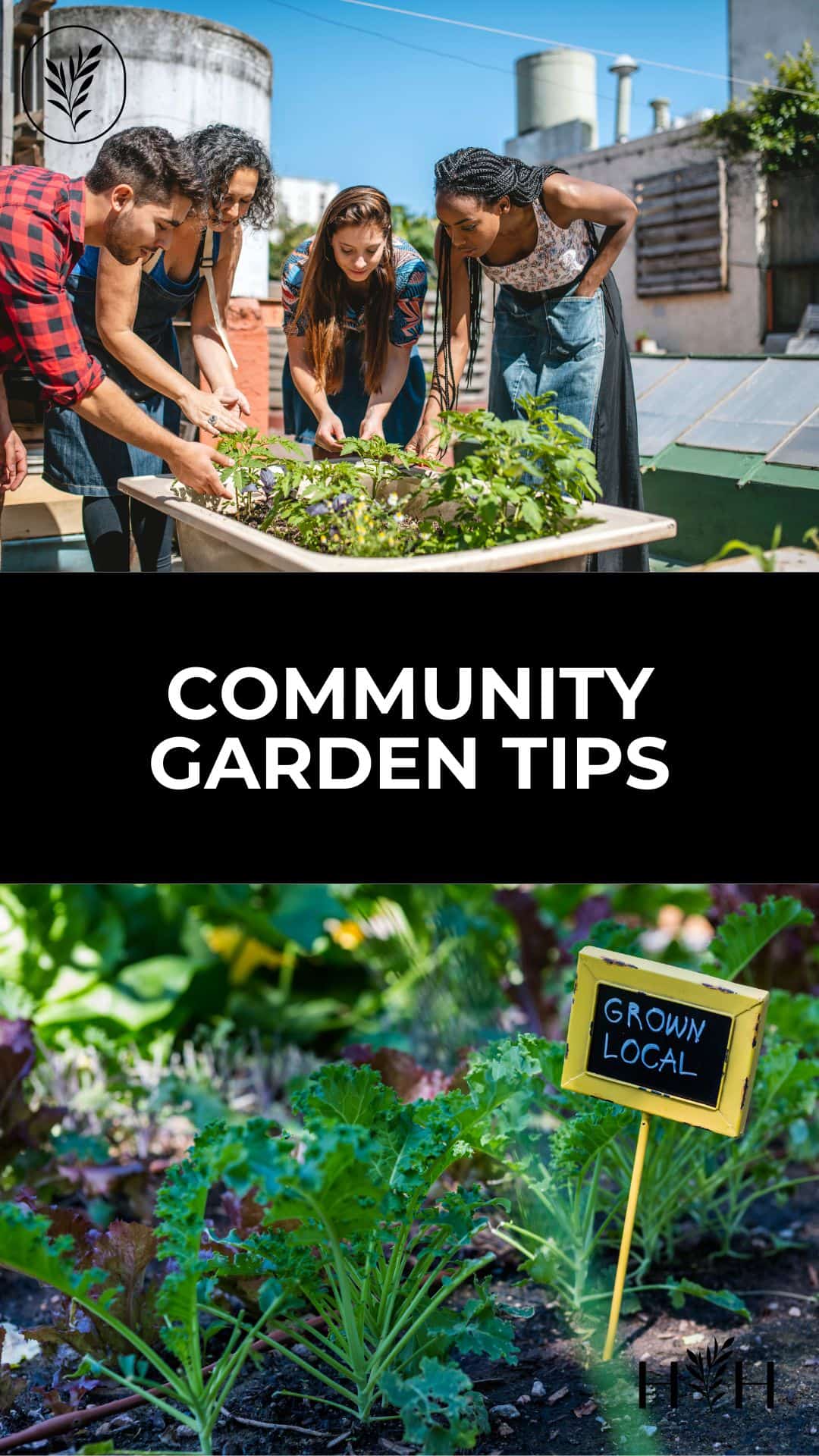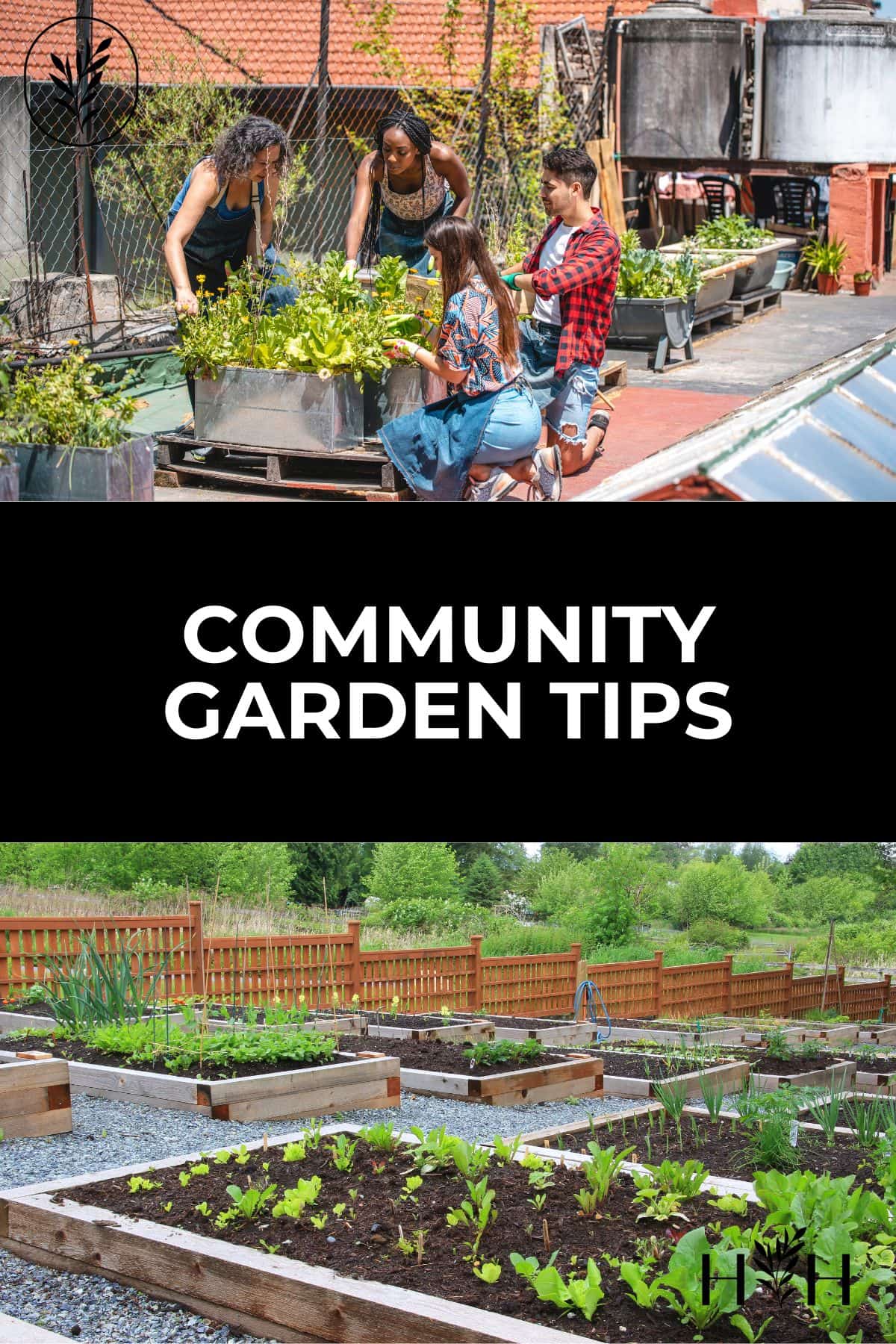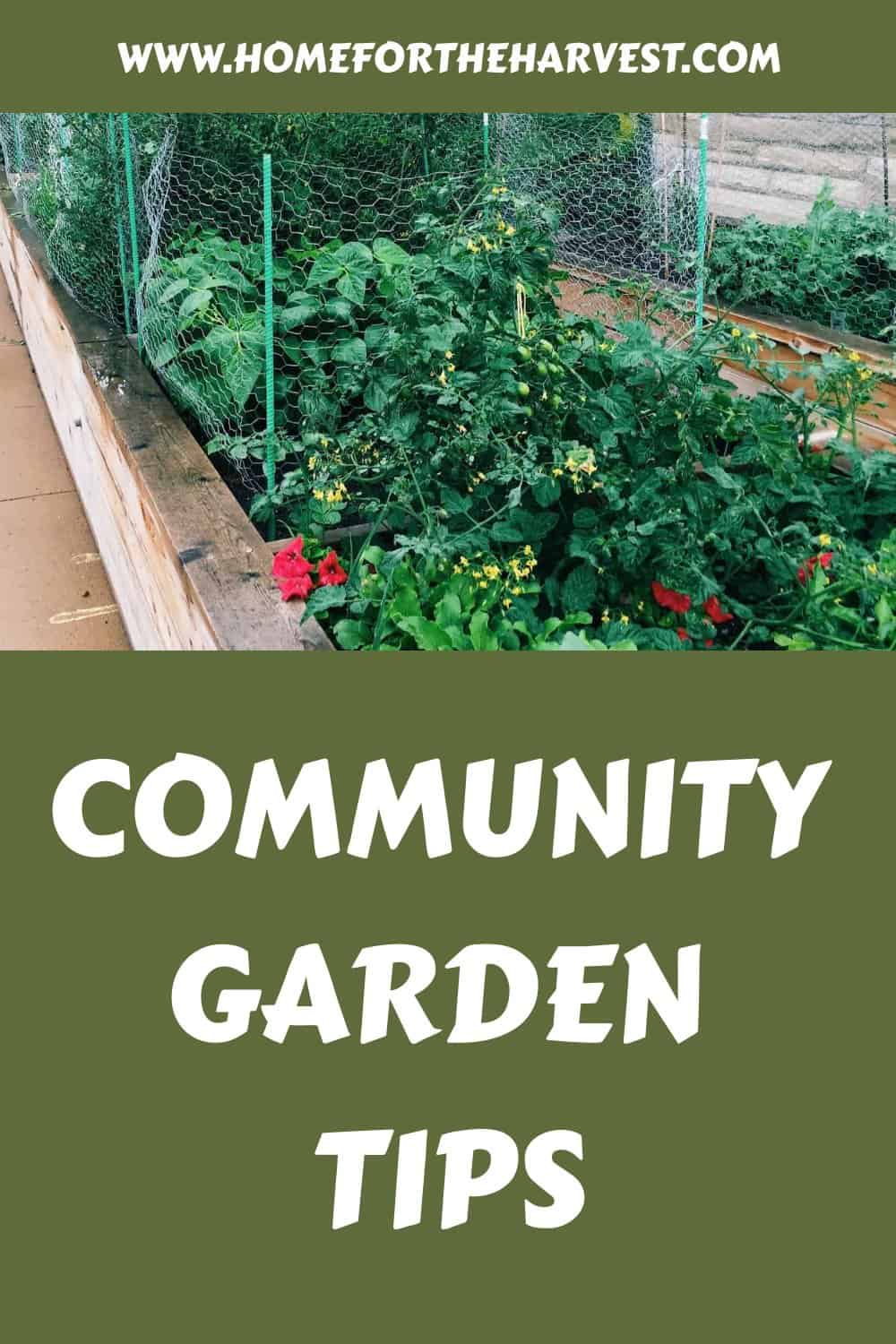Is this the year you join the local urban community garden or allotment? Here are the top community garden tips from a new gardener who has joined her first community garden (and learned what works!).

Ever heard of a community garden? I’d only heard whispers of their existence in the city, and believed them to reside only in hipster heaven. I thought they were for the few lucky ones. I’d heard there were long wait lists – so long that you could spend multiple years waiting for your own small plot.
I’m Leah Howard, a friend of Mary Jane’s, based in Calgary, Alberta. Gardening has always been a part of my life, or rather I should say, my grandmother’s/mother’s lives.
I reaped the benefits of their work growing up. Full disclosure – I am a complete beginner at vegetable gardening, and have been following Home for the Harvest since its creation. I was so inspired by the posts, I gave brewing my own kombucha a try (thanks for the scoby, MJ!), and then decided to try my hand at indoor-grown kale.
In Calgary, we are lucky if we get 3 good months of summer weather for gardening. In fact, you can count on at least one hail storm to ravage your garden, and for the frost to come early. The only month we haven’t seen snow (historically) is August.
Finding & joining a community garden
Community gardens are spaces that are collectively owned by a group for the purpose of gardening. These spaces can have a specific goal, such as to garden for those less fortunate, or they can simply indulge your green thumb while you grow some fresh, local, organic produce.
Despite the frosty Calgary winter, I was able to easily grow my own kale indoors. How awesome is it to have fresh, organic kale, all year round? At your fingertips? Pretty dang awesome. And so my love of home gardening began!
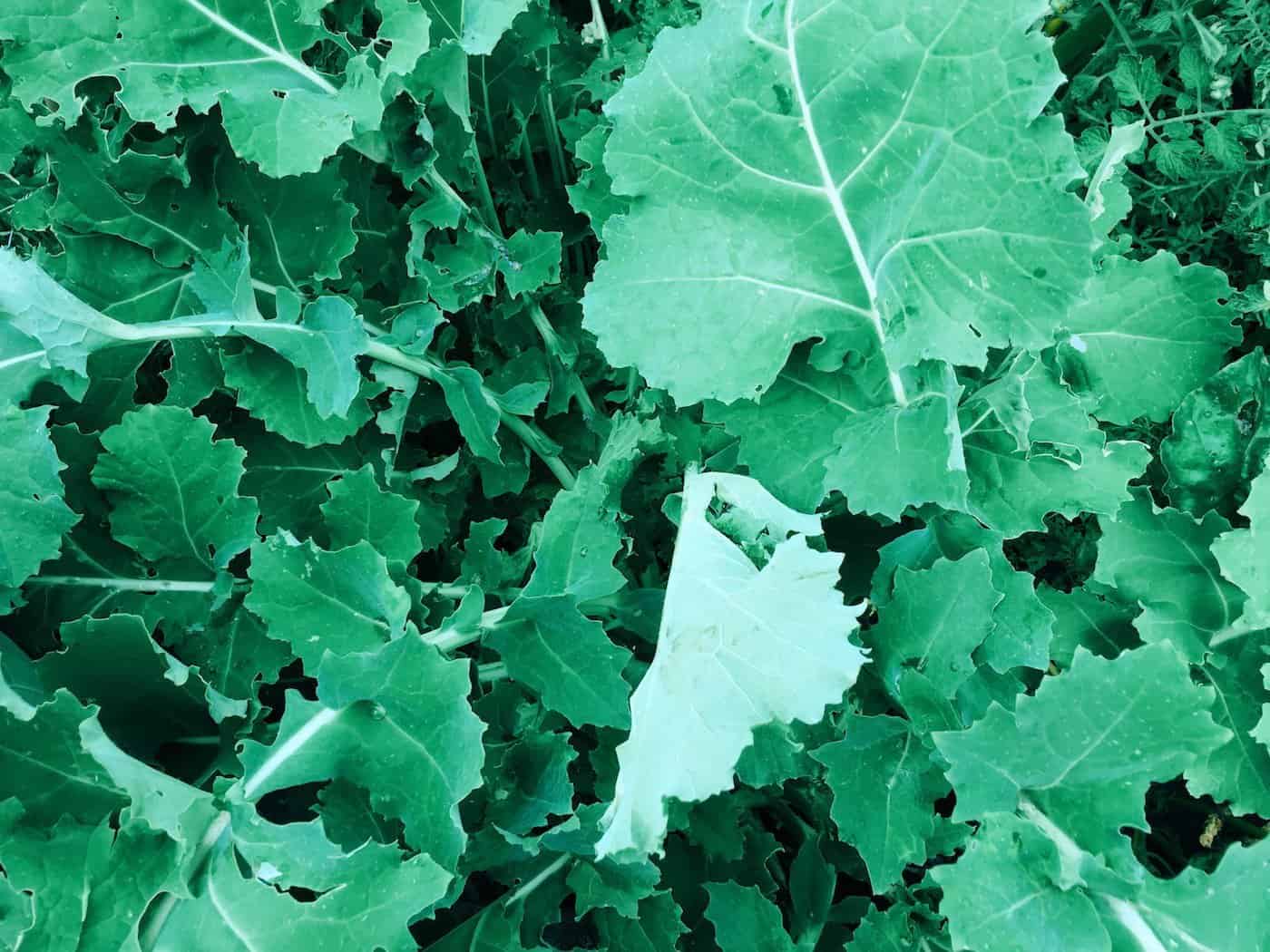
With spring around the corner, I started to turn my thoughts toward having a garden plot of my own for the summer. Being a non-homeowner/urban dweller/apartment nomad, I don’t have the opportunity to grow vegetables on bigger, outdoor plots, as some others might. A community garden seemed like the perfect place for me to experiment.
Community gardens are typically organized by location or neighborhood, hence the “community” part of the name. To find one near you, look on your community association websites or have a search engine help you out. Ideally, you’ll want something close to where you live for logistical purposes.
The garden I signed up for was within a 5-minute walk from my apartment – lucky me! It made for great evening strolls to harvest some fresh goods. Also, to note that there is usually a small upfront fee required to help maintain the garden space.
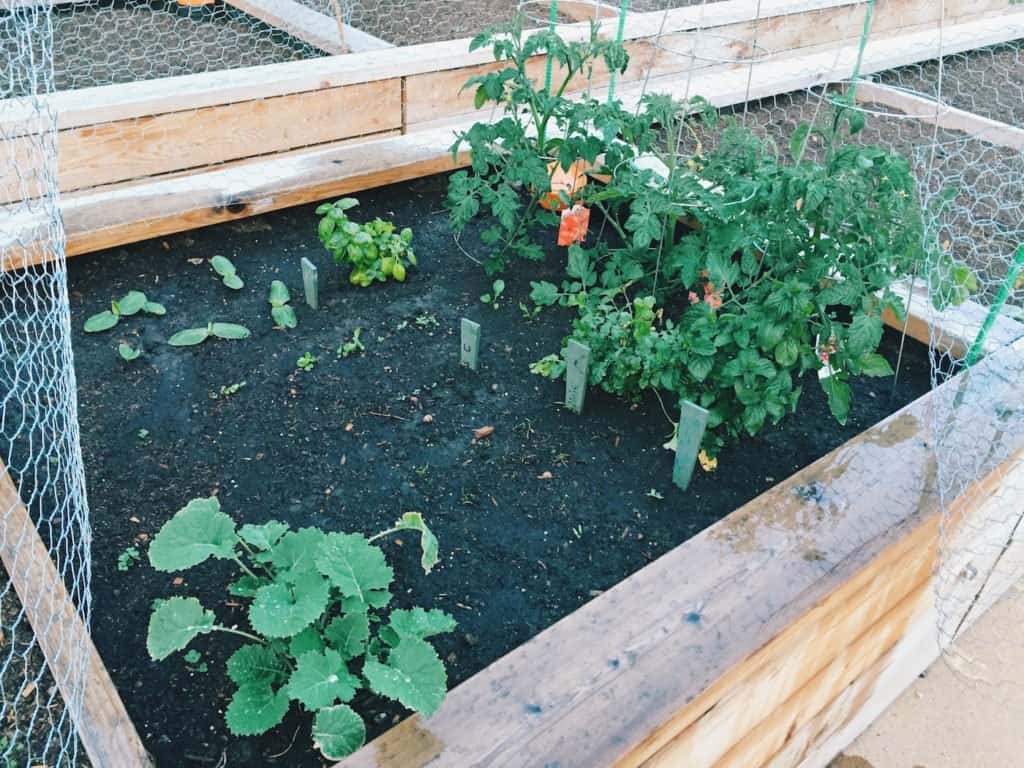
Getting started with a new community garden plot
My new garden plot was a small 4×4 garden area, contained by a wooden raised bed. It was in a sunny, south/west facing spot, with a self-watering design. Water tubes connected to the base of the bed water it automatically. This meant watering requirements for the garden plots were minimal, as well as environmentally conscious. It also encouraged the plants to grow roots down deep towards the water source, which seemed to really help my tomatoes and zucchini flourish.
The material inside each of the wooden-framed raised beds was as follows:
- Top 2/3 = soil + compost
- Bottom 1/3 = sand + water tubing
I was really lucky that this was all set up for me and ready to plant. I picked up some organic seeds from local shops (if you don’t have any near you, order some online from one of these seed companies). Then I decided on how to arrange my plants.
I picked three tomato seedling plants, (pre-started, one cherry variety, and the remaining two medium-sized types). The rest of the plants were started from seed: beets, carrots, yellow zucchini, mixed lettuce, arugula, kale (three varieties), basil, cilantro, and mint.
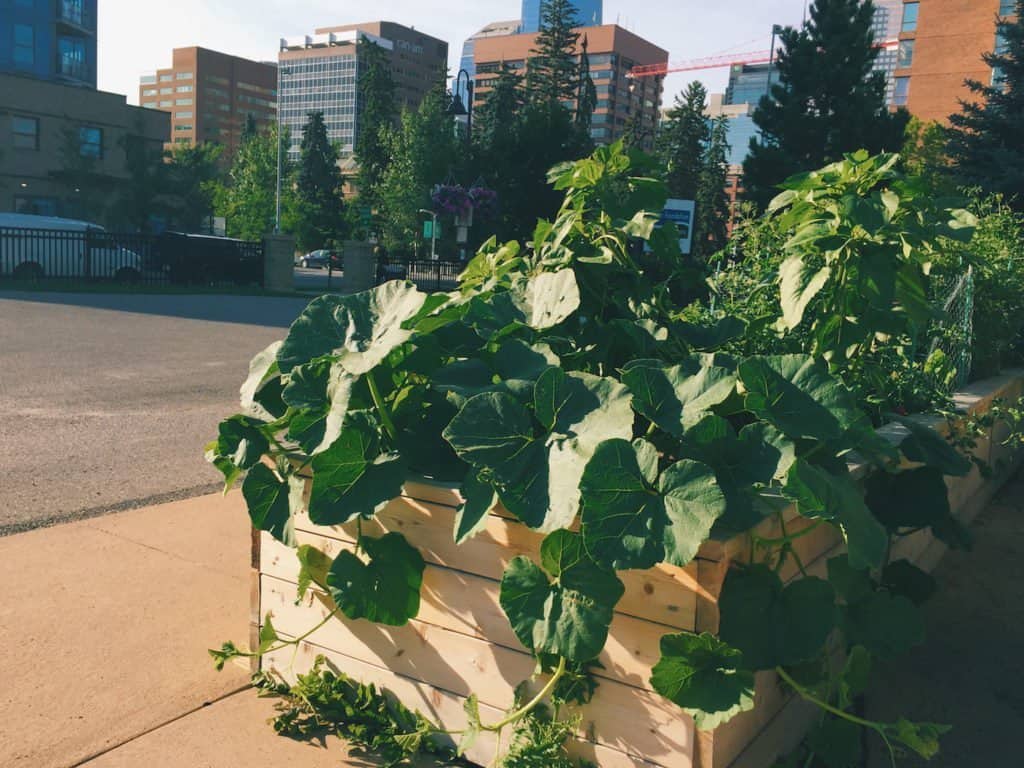
Later on, I fenced the 4×4 area in with chicken wire to attempt to protect it from intruders (unsuccessfully). In terms of space, it’s actually amazing what a small, 4×4 plot can yield for produce each season.
The best tip for picking what you want to grow in your community garden bed is by looking at what you actually eat. If you’re growing carrots and don’t actually like to eat carrots… well.. you see where I’m going with this. If you want to get real fancy, certain crops benefit each other, referred to as companion crops.
Community garden tips I learned: The good, the bad, and the ugly
The Good
- Nothing beats fresh tomato and basil from the garden.
- Kale grows like a weed. A very delicious weed! Make sure you plant the dwarfed variety, otherwise it can grow to be the size of a small car (apparently).
- Companion crops for the win – the zucchini plant shaded my arugula and lettuce, which allowed them to flourish in a cooler setting. If they had been exposed to the hot sun like the rest of my plot I’m not sure they would have made it.
- The tomatoes and zucchini flourished in the sunny garden spot. In August I was getting 10+ fresh tomatoes a day, and the zucchini plant had a life of its own.
- Zucchini flowers are amazing in salads.
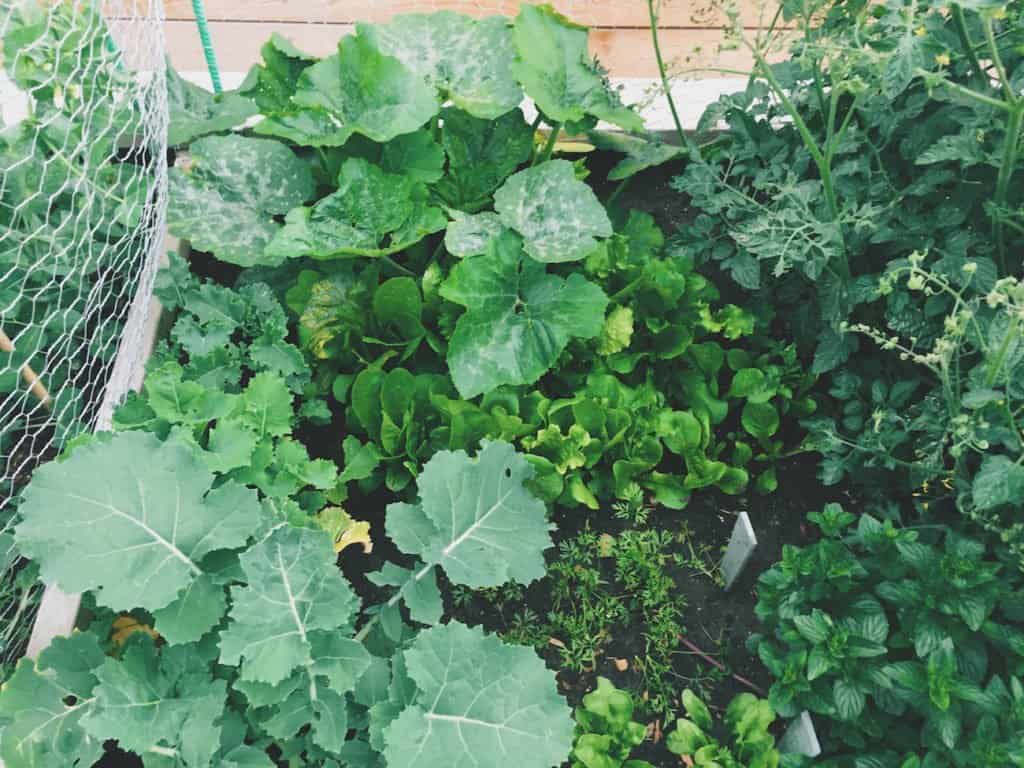
The Bad
- Zucchini plants are big. So big. Do not plant 4 seeds in a 4×4 space.
- Mint is a real bully… I couldn’t believe how invasive it was! Mint would be better contained in a pot.
- If you want to have fresh lettuce/arugula all season long, be sure to succession plant. Planting new seeds every 2 weeks is a good rule-of-thumb tip for a new community garden grower.
- Read seed packages or research what kind of environment each veggie likes to grow in. ie, shade, sun, lots of water or no water, etc.
- Be sure to set up cages/fences for climbing plants (like tomatoes) to climb on before they really start to grow. Otherwise, you’ll be faced with a monster taking over other parts of your garden!
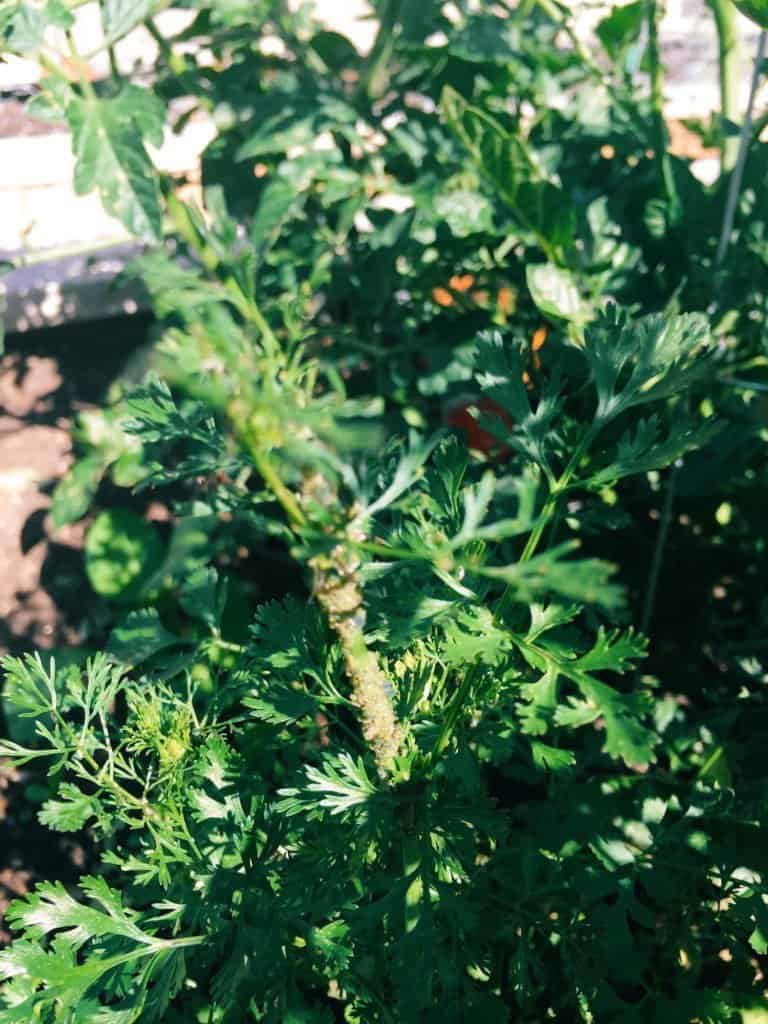
The Ugly (Not really tips, but more like warnings)
- The downtown location of the community garden I joined led to many disappearing plants and produce… there is no sadder feeling when you arrive in the morning to harvest your zucchinis or basil and realize they have all been stolen. I should mention that our garden was not gated and wide open, so I guess I can’t be too mad. I hope I fed someone hungry!
- Aphids are revolting. They took over my cilantro and my kale at the end of the season. Although they are easily brushed off I ended up just pulling out the plant altogether. Top tip – get aphids dealt with early…related…
- Pests! Organic gardening certainly has its trials.
- Hail can shred your garden. Thank you, Calgary.
- Organic Gardening 101: organic gardening includes using (only) organic compost! aka, no bright blue crystals, please and thank you (who knew?!). Flashback to me picking out every bright grain of chemical fertilizer I mistakenly put on my organic plot. It took me hours. Use organic compost or at least organic products instead. Natural compost with lots of worm castings made my garden explode – for real.

Tips for a new community gardener
Here are some things to know if you’re just starting out with a bed in a community garden.
Planning your new garden plot
- Location, location, location! Close to your house is good, but hopefully, the community garden you join isn’t located in a high-traffic area downtown like mine was.
- Make sure you plan out the spacing and design of your plot. Planting 4 zucchini seeds in a small 4×4 plot was probably not one of my better ideas. (In my head, this meant I would get 4 zucchinis for harvest. lol)
- Read up on how to maximize your small plot space. There is loads of information out there on succession planting, shading cooler weather plants with vertical growing plants, interplanting (read: companion crops), and more.
- Remember that once everything has grown, you’ll still need to be able to reach in to harvest and tend to your plants. Try and design accordingly so you can easily grab a leaf of kale or arugula for dinner. This week the current struggle has been me trying to find my ripened tomatoes in a zucchini maze.
- If you’re gardening for 1 or 2 people, you’ll find at certain times throughout the season you’ll have way too much produce for you to eat. Personally, I shared mine with friends and even got some of them growing their own kale on apartment balconies!

Garden care
- Gardens do require work and patience. They also require you to be around somewhat frequently (unless you have some friendly helpers!). It’s kind of like having a cat. But … you can eat this cat.
- Know what kinds of plants will flourish where you live. ie, pineapples and avocados probably don’t grow all that well in Calgary.
- While seedlings are easier to start with for a beginner (I used seedlings for my tomatoes), growing from seed is exponentially cheaper, and so rewarding.
- Keep an eye on the weather. We had such a rainy summer, I barely had to tend to my plot other than making sure it didn’t explode too much into nearby friends’ gardens.
- Plants need food too! Remember to use organic compost or organic packaged fertilizers. For example, tomatoes are heavy feeders and can deplete your soil of nutrients they need to grow. Personally, I only added compost twice this summer and it worked fabulously.
- If something doesn’t work out, that’s ok. I lost quite a few plants very early on in the season. I either tried to re-seed or just accept that it wasn’t the right environment for that plant.
Community gardening
- Get to know your neighbors! Summer means vacation, so having someone to help you water your community garden plot while you’re out of town is amazing.
- Listen to your mom! She knows a lot about gardening. And if she doesn’t, this blog (Home for the Harvest) is a great resource, as are many seasoned gardeners near you or online. Personally, I joined the Horticultural Society in Calgary and it was one of the best decisions I’ve ever made.
- Most of all, experiment and have fun. Try out some interesting community garden tips and ideas. The best way to learn is by trying. I learned so much about gardening this season, I can’t wait to continue the journey!
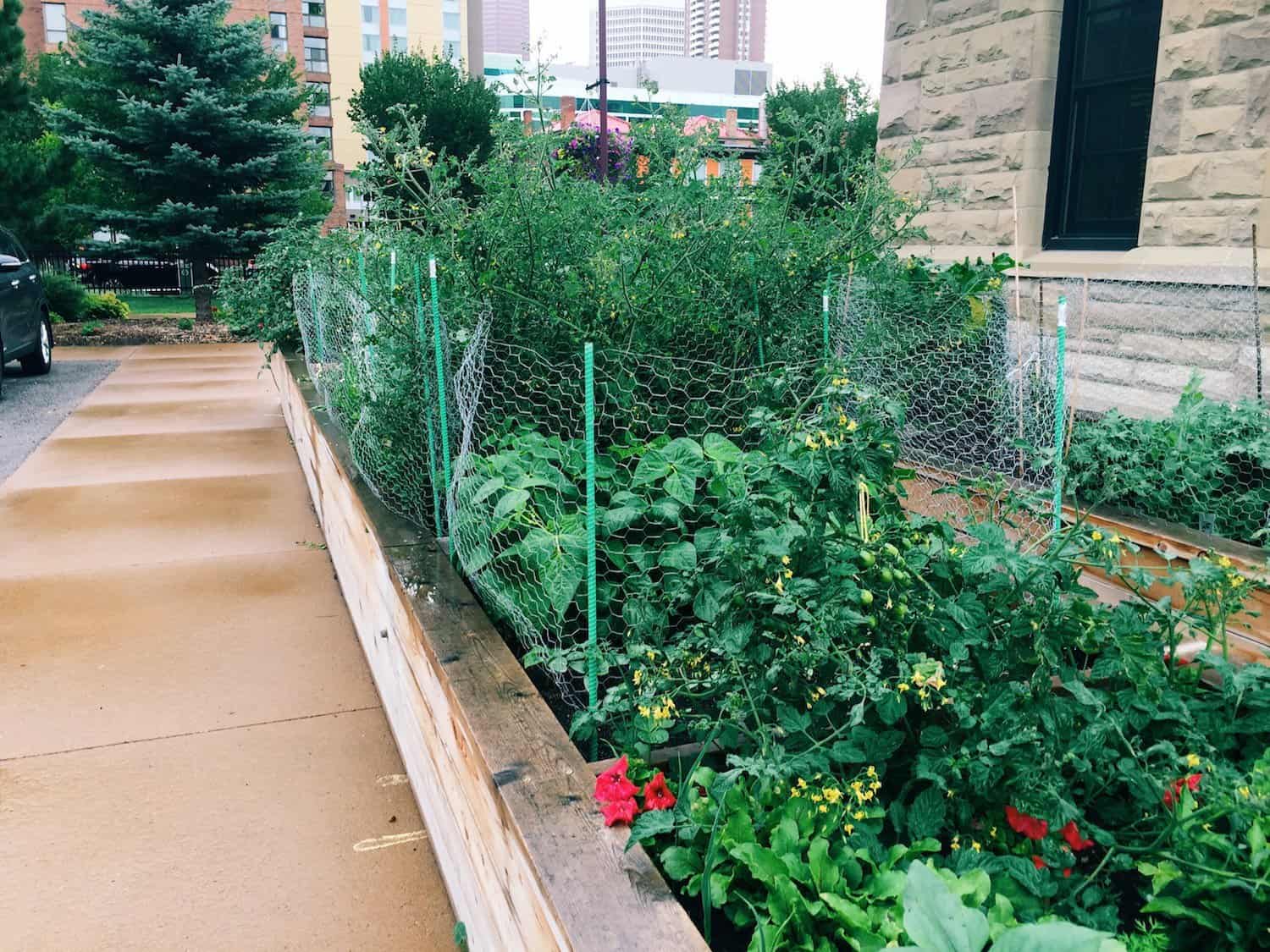
The result: First season with a community garden plot
As mentioned above, not all of my plants flourished, but some sure did (here’s looking at you, tomatoes, kale, and zucchini!). I achieved my goal of being able to supplement my grocery store runs with my own fresh produce, and am so happy with all that I learned this summer. Gardening is also a great way to de-stress. Getting your hands dirty, tending to a plot of land, having it produce food to feed you – it’s all pretty dang rewarding.
It was cool having a community of like-minded neighbors to garden beside and swap tips with. We are even having a big end-of-season harvest party soon!
Wishing you all a fabulous harvest.
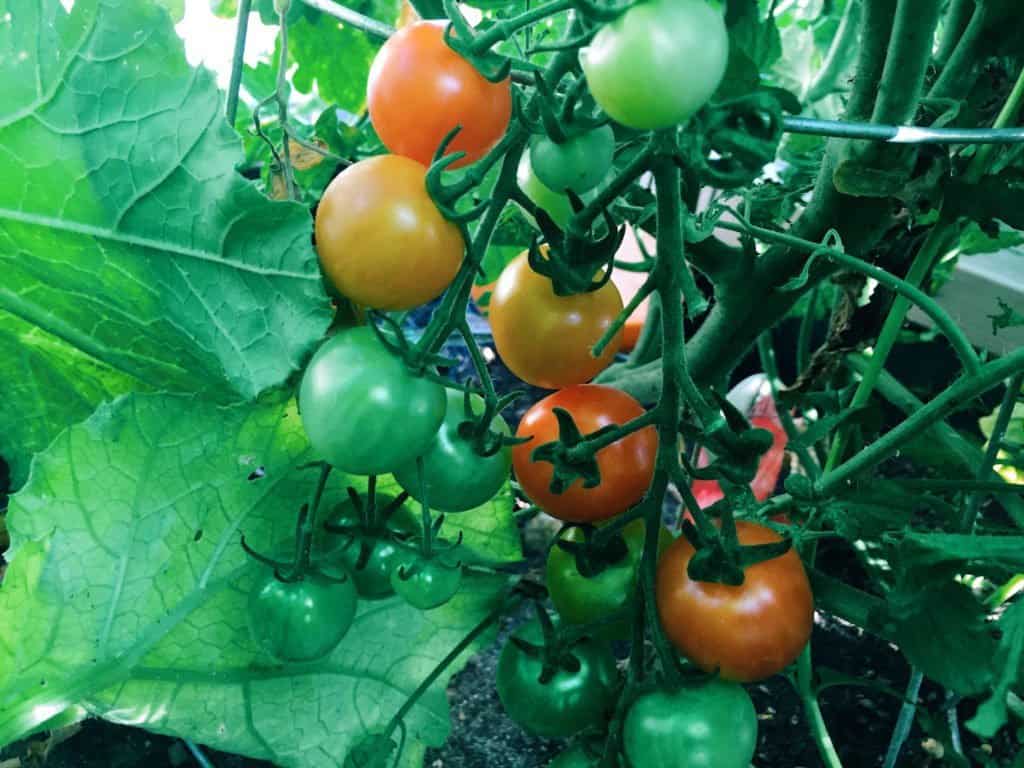
Leah Howard is a guest blogger on Home for the Harvest. She is an avid hiker, expert terrarium gardener, and new community gardener. You can follow Leah on Instagram at @leahhoward and Linked In.
If you’re considering joining a community garden and would like more community garden tips, why not grab a copy of my Free Garden Planner!?
FAQs about community gardens
How to build a successful community garden?
To build a successful community garden, follow these steps:
-Determine the purpose and goals of the garden: Is it for food production, beautification, education, or a combination?
-Find a suitable location: Choose a site that is accessible, has good soil and sunlight, and is near a water source.
-Gather a diverse group of volunteers and stakeholders: Engage with local organizations, community leaders, and neighbors to form a diverse and dedicated team to help plan and maintain the garden.
-Develop a clear plan and budget: Create a comprehensive plan that outlines the design, funding, maintenance, and governance of the garden.
-Obtain necessary permits and insurance: Make sure that you have all the necessary permits and insurance coverage in place to avoid any legal or liability issues.
-Raise funds and secure resources: Identify potential funding sources and seek grants, donations, or sponsorships to support the garden.
-Build the garden: Once you have the resources and volunteers, start building the garden beds, paths, and other structures.
-Plan and implement educational programs: Consider offering workshops, classes, or events to educate the community about sustainable gardening practices.
-Foster community involvement: Encourage community members to participate in the garden by volunteering, sharing their expertise, or providing feedback.
-Evaluate and adjust: Continuously evaluate the success of the garden and make necessary adjustments to ensure its long-term success.
What are the challenges of community gardening?
Community gardening can face various challenges, including:
-Funding: Community gardens often require funding for materials, tools, and maintenance, which can be difficult to secure.
-Land Access: Finding a suitable location for the garden can be a challenge, especially in urban areas where space is limited.
-Volunteer Management: Maintaining a consistent group of volunteers can be difficult, as schedules and commitments can change.
-Vandalism and theft: Community gardens can be vulnerable to theft and vandalism, which can lead to damage and loss of resources.
-Climate and weather: Extreme weather conditions, such as heatwaves, droughts, and heavy rains, can impact the health of plants and soil in the garden.
-Pests and diseases: Pests and diseases can be a problem in community gardens, and managing them effectively can be challenging.
-Regulation and Permits: Community gardens may need permits and clearance from local authorities, which can be time-consuming and difficult to obtain.
-Maintenance and Upkeep: Maintaining a community garden requires regular attention, including weeding, watering, and pruning, which can be a challenge for volunteers with limited time or resources.
-Conflicts among gardeners: Conflicts can arise among community members with different interests, ideas, or priorities for the garden.
-Sustainability: Ensuring the long-term sustainability of the garden, including finding volunteers to take on leadership roles, can be a challenge.
What can you grow in a community garden?
In a community garden, you can grow a variety of plants, including:
-Vegetables: Tomatoes, carrots, lettuce, kale, onions, peppers, and many other vegetables can be grown in a community garden.
-Fruits: Berries, such as strawberries, raspberries, and blackberries, can be grown in a community garden, as well as small fruit trees like apples, peaches, and plums.
-Herbs: Popular herbs like basil, rosemary, thyme, and mint can be grown in a community garden, providing fresh seasonings for cooking.
-Flowers: Annual and perennial flowers, such as sunflowers, zinnias, and marigolds, can add color and beauty to a community garden.
-Shrubs and Trees: Shrubs and small trees, such as blueberries, raspberries, and currants, can provide food and shade in a community garden.
-Compost Crops: Crops like clover, buckwheat, and alfalfa can be grown in a community garden to provide material for composting.
-It’s important to consider the climate, soil quality, and local regulations when choosing what to grow in a community garden. Gardeners should also consider the maintenance requirements and growth habits of each plant to ensure a successful harvest.


